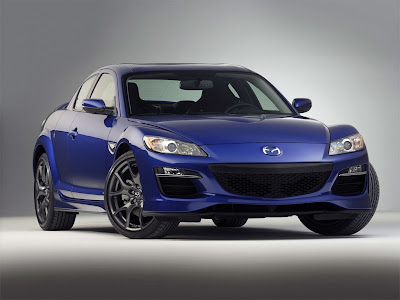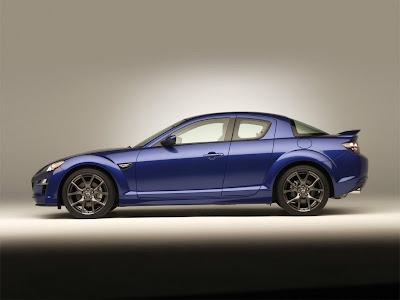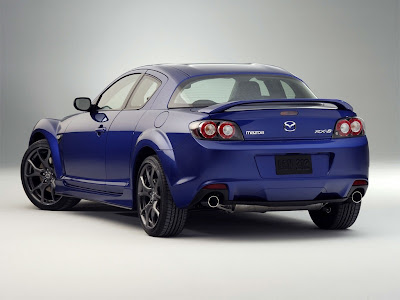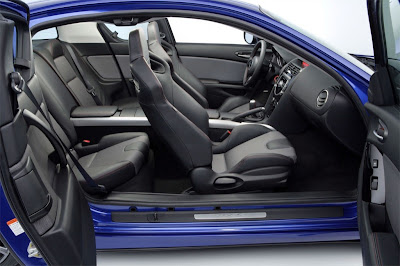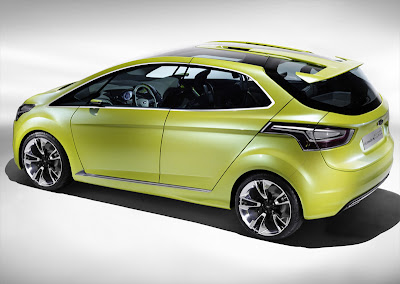INFINITI G37
 For the 2009 model the G35 sedan was replaced by the G37 sedan. The G37 sedan was first unveiled at the Geneva Motor Show for the European market. Exterior, interior and options remain identical to the 2008 G35 model range but the sedan now also sports the 3.7-liter VQ37VHR "VVEL" V6, rated 328 hp (245 kW) at 7,000 rpm and 269 ft·lbf (365 N·m) at 5,200 rpm that was previously introduced in the G37 Coupe. Although the engine gains only 0.2 kg·m (2 N·m; 1 ft·lbf) peak torque over the VQ35HR and this torque value arrives at a later 5,200 rpm vs. 4,800 in the VQ35HR, the torque curve itsel
For the 2009 model the G35 sedan was replaced by the G37 sedan. The G37 sedan was first unveiled at the Geneva Motor Show for the European market. Exterior, interior and options remain identical to the 2008 G35 model range but the sedan now also sports the 3.7-liter VQ37VHR "VVEL" V6, rated 328 hp (245 kW) at 7,000 rpm and 269 ft·lbf (365 N·m) at 5,200 rpm that was previously introduced in the G37 Coupe. Although the engine gains only 0.2 kg·m (2 N·m; 1 ft·lbf) peak torque over the VQ35HR and this torque value arrives at a later 5,200 rpm vs. 4,800 in the VQ35HR, the torque curve itsel f is improved and flattened across the rpm range via Nissan's new VVEL (Variable Valve Event and Lift) variable valve timing resulting in better throttle response and low rpm torque. The G37's VQ37VHR engine has been touted by car magazines and reviewers as an improvement over the VQ35HR engine mostly adding much refinement and smoother engine operation, especially at high rpm where the VQ35HR engine was frequently criticized for NVH and sounding strained, harsh and loud. The often criticized too aggressive clutch engagement, notchiness of the 6-speed manual in the G35 and engine vibrations transferred through the shifter and pedals in the G35 6MT cars was also addressed in the new G37 models.
f is improved and flattened across the rpm range via Nissan's new VVEL (Variable Valve Event and Lift) variable valve timing resulting in better throttle response and low rpm torque. The G37's VQ37VHR engine has been touted by car magazines and reviewers as an improvement over the VQ35HR engine mostly adding much refinement and smoother engine operation, especially at high rpm where the VQ35HR engine was frequently criticized for NVH and sounding strained, harsh and loud. The often criticized too aggressive clutch engagement, notchiness of the 6-speed manual in the G35 and engine vibrations transferred through the shifter and pedals in the G35 6MT cars was also addressed in the new G37 models. The 2009 sport package (standard on Sport 6MT cars, optional on Journey and X models) now also included larger sport brakes with 4-piston front/2-piston rear calipers and large 14-inch (360 mm) front and 13.8-inch (350 mm) rear rotors and a new 18-inch (460 mm) sport wheel design. The G37 Sedan is available as G37, G37 Journey, G37S 6MT and G37x AWD models. Major option packages remain to be the Premium Package, Sport Package, Nav Package, Tech Package. All 2009 models come standard with self healing "Scratch Shield" paint which employs a soft polymer top coat that can self heal small scratches and swirl marks.
The 2009 sport package (standard on Sport 6MT cars, optional on Journey and X models) now also included larger sport brakes with 4-piston front/2-piston rear calipers and large 14-inch (360 mm) front and 13.8-inch (350 mm) rear rotors and a new 18-inch (460 mm) sport wheel design. The G37 Sedan is available as G37, G37 Journey, G37S 6MT and G37x AWD models. Major option packages remain to be the Premium Package, Sport Package, Nav Package, Tech Package. All 2009 models come standard with self healing "Scratch Shield" paint which employs a soft polymer top coat that can self heal small scratches and swirl marks.
Even though the final drive ratio for vehicles equipped with the 7-speed auto has been (numerically) reduced from 3.69 to 3.36, the new auto has much lower first through fourth gear overall ratios than the old 5-speed auto and the 6-speed manual in the 6MT cars (which retain the old 3.69 final drive ratio). Giving it closer gear ratios in all gears to match engine rpm better with power demand and with the 7th gear being an overdrive to reduce highway cruising rpm and improve fuel mileage. The new 7-speed automatics retain the Drive Sport (DS) shift mode and Downshift Rev Matching (DRM) feature of the 5-speed auto. The new engine/transmission combo did add some weight the car (3,590 lb. for the G37 vs. 3,508 for the G35 in identical trim).
SAAB 9-3
 The Saab 9-3 is a compact executive car produced by the automaker Saab in Trollhättan, Sweden from 1998 to 2009. The convertible (cabriolet) version was manufactured in Austria by Magna Steyr until recently, when it
The Saab 9-3 is a compact executive car produced by the automaker Saab in Trollhättan, Sweden from 1998 to 2009. The convertible (cabriolet) version was manufactured in Austria by Magna Steyr until recently, when it was moved to Trollhättan. The 9-3 shares its platform with the Opel Vectra, and with the Cadillac BLS made on the same assembly line in Sweden. It is currently Saab's entry-level model, however in North America between 2005 and 2006 the Subaru Impreza-based Saab 9-2X was its entry-level modeThe 2009 9-3 series expands the trim levels while dropping the limited-edition Turbo X sedan and wagon from the lineup. The 2.0T and Aero sedan and wagon models are now
was moved to Trollhättan. The 9-3 shares its platform with the Opel Vectra, and with the Cadillac BLS made on the same assembly line in Sweden. It is currently Saab's entry-level model, however in North America between 2005 and 2006 the Subaru Impreza-based Saab 9-2X was its entry-level modeThe 2009 9-3 series expands the trim levels while dropping the limited-edition Turbo X sedan and wagon from the lineup. The 2.0T and Aero sedan and wagon models are now  available with Saab's all-wheel drive(XWD). The convertible range continues to lack the all-wheel-drive option because of limited under-body space for the necessary componentry due to added structural bracing to compensate for the rigidity lost when eliminating the hard roof from the design of a car. The new Saab 9-3 is virtually unchanged from the 2008 model, which underwent subtle design and performance enhancements. During 2009 the 9-3X was launched at the Geneva auto show. The 9-3X is a four wheel drive XUV version of the 9-3 SportCombi.
available with Saab's all-wheel drive(XWD). The convertible range continues to lack the all-wheel-drive option because of limited under-body space for the necessary componentry due to added structural bracing to compensate for the rigidity lost when eliminating the hard roof from the design of a car. The new Saab 9-3 is virtually unchanged from the 2008 model, which underwent subtle design and performance enhancements. During 2009 the 9-3X was launched at the Geneva auto show. The 9-3X is a four wheel drive XUV version of the 9-3 SportCombi.
SPYKER C12 ZAGATO

The Spyker C12 Zagato is the third production car from the Dutch car manufacturer Spyker. Its an all aluminium rear wheel drive sports car, based on the Spyker C12 Spyder.
On March 6, 2007 Spyker announced the C12 at the Salon International de l'Auto in Geneva. The Italian firm Zagato  co-designed the C1Performance: Top Speed: 310 km/h (193 mph) 0-100 km (0-60): 3.8 secs
co-designed the C1Performance: Top Speed: 310 km/h (193 mph) 0-100 km (0-60): 3.8 secs
Engine: Type: 6.0 litre Audi W12 Power: 372 KW/500 bhp Power/Weight Ratio: 337 bhp (251 kW; 342 PS) per ton
Gearbox: 6-speed manual or automatic with F1 style shifting
Wheels: Wheelbase: 2,680 mm (105.5 in) Front Tires: 27/65-18 Rear Tires: 27/68-18 Driven Wheels: Rear Wheel Drive
Brakes:
Front Brakes: Ventilated & Grooved Discs w/4-Piston Calipers, ABS
Rear Brakes : Ventilated & Grooved Discs w/6-Piston Calipers, ABS
The Spyker C12 Zagato will retail for EUR 495,000 (about USD $740,000)
DODGE TOMAHAWK
The Dodge Tomahawk is a concept vehicle which was produced by Dodge.
At the 2003 North American International Auto Show in Detroit, Michigan, Dodge unveiled a vehicle with an unusual design, featuring the 500 hp (373 kW) 8.3 L V10 engine from the Dodge Viper. The vehicle has two front wheels and two rear wheels, making it a kind of motorized quadricycle rather than a typical motorcycle. It was reported that hand-built examples of the Tomahawk would be produced on order through the Nieman Marcus catalog at a price of US$ 555,000 for t he bike and $100 million to develop. and 9 of them might have sold. The Tomahawk's impracticality was mocked by one with as a "rideable engine stand."
he bike and $100 million to develop. and 9 of them might have sold. The Tomahawk's impracticality was mocked by one with as a "rideable engine stand."
ASTON MARTIN RAPIDE
 The Aston Martin Rapide is a four-door, high-performance sport saloon, which British luxury marque Aston Martin plans to introduce in early 2010 to compete with the Maserati Quattroporte, Mercedes-Benz CLS-Class, and Porsche Panamera along with the upcoming Audi A7 and Lamborghini Estoque.
The Aston Martin Rapide is a four-door, high-performance sport saloon, which British luxury marque Aston Martin plans to introduce in early 2010 to compete with the Maserati Quattroporte, Mercedes-Benz CLS-Class, and Porsche Panamera along with the upcoming Audi A7 and Lamborghini Estoque.  It was first presented as a concept car at the North American International Auto Show in 2006. The Rapide name is a reference to the Lagonda Rapide, a saloon car produced by Lagonda, now part of Aston Martin. The car is based on an Aston Martin DB9. The base price for the Aston Martin Rapide is $199,950 (USD) and is scheduled to be available in April 2010
It was first presented as a concept car at the North American International Auto Show in 2006. The Rapide name is a reference to the Lagonda Rapide, a saloon car produced by Lagonda, now part of Aston Martin. The car is based on an Aston Martin DB9. The base price for the Aston Martin Rapide is $199,950 (USD) and is scheduled to be available in April 2010 .
.
Aston Martin has announced that the Rapide will be built at a dedicated plant at the Magna Steyr facility in Graz, Austria. Production will start in 2010 and the factory plans to build 2,000 per year. The production version will feature a full-length glass roof and LED light bars on the rear end, two firsts for Aston Martin.
For luxury and convenience, the Rapide's standard features include a tilt-telescoping steering wheel, bi-xenon headlamps and LED taillamps. Leather and walnut trim are standard, with metallic accents; power front seats with memory and heating; Bluetooth; satellite radio; and USB and iPod connectivity. The production version of the Rapide was shown at the 2009 Frankfurt Motor Show.
ASTON MATRIN ONE-77


The Aston Martin One-77 is a coupé built by Aston Martin. It first appeared at the 2008 Paris Motor Show, although the car remained mostly covered by a "Savile Row tailored skirt" throughout the show, before being fully revealed at the 2009 Geneva Motor Show. It will have a limited run of 77 units with delivery starting in October 2010Prior to the One-77's Paris Motor Show debut, various details about the car had been leaked, but official specifications were not fully revealed until the 2009 Geneva Auto Show. The One-77 will feature a full carbon fibre monocoque chassis, a handcrafted aluminium body, and a 7.3 litre V12 engine with over 700 hp (520 kW). The engine will be naturally aspirated, and the car will have a strengthened version of the DB9's 6-speed automated manual transmission and height-adjustable pushrod suspension coupled with dynamic stability control. It will feature Pirelli P Zero Corsa tyres (255/35 ZR20 front, 335/30 ZR20 rear) and Carbon Ceramic Matrix brakes.
V12 engine with over 700 hp (520 kW). The engine will be naturally aspirated, and the car will have a strengthened version of the DB9's 6-speed automated manual transmission and height-adjustable pushrod suspension coupled with dynamic stability control. It will feature Pirelli P Zero Corsa tyres (255/35 ZR20 front, 335/30 ZR20 rear) and Carbon Ceramic Matrix brakes. Top speed was estimated to be 200 mph (320 km/h) but actual tests in December 2009 showed a figure of 220.007 mph (354.067 km/h), with a 0-60 mph time in approximately 3.5 seconds. The projected weight is 1,500 kg (3,307 lb)
Top speed was estimated to be 200 mph (320 km/h) but actual tests in December 2009 showed a figure of 220.007 mph (354.067 km/h), with a 0-60 mph time in approximately 3.5 seconds. The projected weight is 1,500 kg (3,307 lb)
ASTON MARTIN DB9
 The Aston Martin DB9 is a modern interpretation of a traditional Aston Martin sports car, representing a contemporary version of classic DB design elements and characteristics.
The Aston Martin DB9 is a modern interpretation of a traditional Aston Martin sports car, representing a contemporary version of classic DB design elements and characteristics.
"We wanted an elegant, beautiful car - in keeping with Aston Martin tradition," says Director of Design Henrik Fisker. "I was of course acutely aware that Aston Martin is renow ned for its superb styling. It has launched some of the most beautiful sports and GT cars ever seen."
ned for its superb styling. It has launched some of the most beautiful sports and GT cars ever seen."
Key traditional Aston Martin features incorporated into the Aston Martin DB9 include the distinctive grille, side strakes and clean, crisp, uncluttered lines.
"Aston Martins are not edgy cars - they don't have sharp surfaces or pronounced power domes," says Fisker. "The bodywork is elegant and gently curved, like a supremely fit person, with great muscle tone. But it is not like a body builder, who is bulky and out of harmony."
HUMMER H4
 The Hummer HX is a concept Off-road vehicle/Compact SUV revealed on 8 January 2008 and manufactured by General Motors. The vehicle is smaller than both the H2 and H3 and is powered by a 3.6 L (~220 cu in) SIDI V6 that is E85 FlexFuel capable. A 2.4 L (~146 cu in) SIDI 4 cylinder option would likely be available as well, making it the very first Hummer with a four-cylinder engine.
The Hummer HX is a concept Off-road vehicle/Compact SUV revealed on 8 January 2008 and manufactured by General Motors. The vehicle is smaller than both the H2 and H3 and is powered by a 3.6 L (~220 cu in) SIDI V6 that is E85 FlexFuel capable. A 2.4 L (~146 cu in) SIDI 4 cylinder option would likely be available as well, making it the very first Hummer with a four-cylinder engine.
More compact than a HUMMER H3 – 81 inches (2,057 mm) wide, with a 103-inch wheelbase (2,616-mm) – the HX concept is an open-air, two-door off-road vehicle. Its design is based on the ideas developed by a trio of young designers who are new to the HUMMER studio.
The HX was shown with a slant-back configuration, wearing a desert-inspired matte olive paint scheme, at the North American International Auto Show. Additional convertible features include:
*
o Removable doors – easily removable pins in the exposed hinges allow the doors to be removed quickly – an appreciated feature of many serious off-roaders
o Removable fender flares – attached with quarter-turn quick-release fasteners, the composite fender flares can be quickly removed for additional trail/rock clearance, or if the flare is damaged during off-road driving
The vehicle was featured in Transformers: Revenge of the Fallen.
The vehicle is likely not going into production since GM is closing the entire Hummer brand. Instead, the underpinnings will be used in the redesigned 2012 Chevrolet Colorado/GMC Canyon.
TOYOTA CELICA
 The Toyota Celica name been applied to a series of popular coupes made by the Japanese company Toyota. The name is ultimately derived from the Latin word coelica meaning "heavenly" or "celestial".
The Toyota Celica name been applied to a series of popular coupes made by the Japanese company Toyota. The name is ultimately derived from the Latin word coelica meaning "heavenly" or "celestial".
Throughout its life span the Celica has been powered by various four cylinder engines. The most significant change occurred in 1986, when the car's drive layout was changed from rear wheel drive to front wheel drive. During the first three generations, American market Celicas were powered by various versions of Toyota's R series engines. The four-wheel drive turbocharged model (designated All-trac in the US or GT-Four elsewhere) was produced from 1986 to 1999. Variable Valve Timing came in late 1997 Japanese models, and became standard in all models from 2000 on. Through seven generations, the model has gone through many revision s and design forks, including the Toyota Celica Supra (later known as the Toyota Supra). The Celica was available as notchback and liftback coupes, as well as a convertible.
s and design forks, including the Toyota Celica Supra (later known as the Toyota Supra). The Celica was available as notchback and liftback coupes, as well as a convertible.
HONDA 2000
 The Honda S2000 was a two-seat, rear-wheel-drive roadster produced from 2000-'09. It featured a high-performance, high-winding inline four-cylinder engine along with a superbly balanced chassis. The S2000 was the first sports car to roll out of a Honda factory since the tiny S500, S600 and S800 roadsters of the 1960s, and it ended up having one of the longest production runs of any modern car.
The Honda S2000 was a two-seat, rear-wheel-drive roadster produced from 2000-'09. It featured a high-performance, high-winding inline four-cylinder engine along with a superbly balanced chassis. The S2000 was the first sports car to roll out of a Honda factory since the tiny S500, S600 and S800 roadsters of the 1960s, and it ended up having one of the longest production runs of any modern car.
With minimalist cockpit comforts and a racetrack-ready suspension, the Honda S2000 was a pure sports car. More powerful than the less expensive Miata, yet not as pricey or luxurious as a Z4 or SLK, the S2000 occupied a niche within a niche. Quick and communicative steering, an ideal 49/51 weight distribution and an engine that loved to rev coupled with a slick six-speed gearbox promised a lot of fun for the serious driving enthusiast. Today, the S2000's reputation for reliability and reasonable resale values makes it a superb pre-owned choice.
Most Recent Honda S2000
There were two versions of the Honda S2000 roadster for its farewell 2009 model year, the standard version and the racetrack-oriented CR (for Club Racer). Notable hardware on both included a feisty 2.2-liter inline-4 with an 8,200-rpm redline coupled to a short-throw six-speed manual gearbox. Without resorting to forced induction (turbo- or supercharging), this jewel of an engine utilized Honda's variable valve timing and lift system (VTEC) to squeeze 237 horsepower out of just 2.2 liters. No automatic transmission was available in any S2000.
Standard features on later iterations of the S2000 included a power-operated top with a glass rear window (with defroster), lightweight 17-inch wheels, leather seats, keyless entry, air-conditioning, an eight-speaker CD audio system, stability control and HID headlights. A lightweight (44 pounds) aluminum hardtop was optional on the standard car. The special CR version deleted the power top, A/C and stereo to reduce weight and added a removable hardtop, track-oriented suspension settings, a beefed-up structure for higher rigidity and more aerodynamic bodywork.
Debuting in 2000, the Honda S2000 started life with a 2.0-liter inline-4  that redlined at 9,000 rpm. With 240 hp, it put out more horsepower per liter than any other naturally aspirated engine on the planet. Although it provided a thrilling ride when driven aggressively, our editors did find some faults. Among the more notable ones were a lack of low-end torque that made the S2000 a bit flat-footed around town, a sometimes persnickety shifter, a weak audio system and a plastic rear window.
that redlined at 9,000 rpm. With 240 hp, it put out more horsepower per liter than any other naturally aspirated engine on the planet. Although it provided a thrilling ride when driven aggressively, our editors did find some faults. Among the more notable ones were a lack of low-end torque that made the S2000 a bit flat-footed around town, a sometimes persnickety shifter, a weak audio system and a plastic rear window.
VOKLKSWAGEN GTI
 In Germany, the Volkswagen Golf Mk4 was succeeded by the Golf Mk5 in 2003 in Europe. This model did not reach the North American markets until model year 2006, where it was marketed as the Rabbit. The North American base model is powered by a 2.5 L five-cylinder engine. A GTI version is powered by a turbocharged version of the 2.0 FSI engine, producing 200PS.
In Germany, the Volkswagen Golf Mk4 was succeeded by the Golf Mk5 in 2003 in Europe. This model did not reach the North American markets until model year 2006, where it was marketed as the Rabbit. The North American base model is powered by a 2.5 L five-cylinder engine. A GTI version is powered by a turbocharged version of the 2.0 FSI engine, producing 200PS.Volkswagen also introduced the "Fast" marketing ploy for the North American market, dedicated to the "fast" that lives inside every driver. Drivers who purchase new GTI Mk5s from a dealership are shipped a model of said Fast, which employs GTI-like features, and appears as a small robot thing in the commercials. The GTI version is the only on sale in Mexico.

The saloon/sedan version, again called Volkswagen Jetta in most markets and assembled in Germany, South Africa, as well as Mexico (In Mexico this car is named Bora, in Europe it is now again named Jetta, as well), followed in 2004, a new Golf Variant in 2006. The Jetta however, is not the only variant, as the notchback version of the GTI can also be had in the GLI version. The front ends of the car are the same, with the only difference being that the GLI is a sedan, while the GTI is a "hot hatch".

Later models of the Mk5 introduced the 1.4 TSI turbocharged petrol engine with front wheel drive.
In a comparison test conducted by Car and Driver Magazine, the Volkswagen Rabbit S was named the winner among eight small cars. While it was praised for its excellent driving position, fine instruments, and strong engine, it was criticized for having high levels of road noise, uncomfortable seats, and poor fuel economy. Though, the final verdict stated, "This one is all about driving pleasure, so it wins." The Rabbit also placed first in their final comparison in December 2006.

VOLKSWAGEN CC

Owing to the success and rapid consumer acceptance of the flex versions, by 2005 VW had sold 293,523 flex cars and light-duty trucks, and only 53,074 gasoline-powered automobiles, jumping to 525,838 flex-fuel vehicles while selling only 13,572 cars and 248 light trucks powered by gasoline in 2007, and reaching new car sales of 564,959 flex fuels in 2008, representing 96 percent of all cars and light-duty trucks sold in that year VW do Brasil stopped manufacturing gasoline-only vehicles models for the local market in 2006, and remaining gasoline-engine sales comes from imports. The flex fuel models produced for the local market are Gol, Fox, CrossFox, Parati, Polo Hatch, Polo Sedan, Saveiro, Golf, and Kombi. By March 2009 Volkswagen do Brasil had attained the milestone mark of two million flexible-fuel vehicles produced since 2003.

HONDA CR-V
 The Honda CR-V is a compact crossover SUV manufactured by the Japanese company Honda since 1996. It was loosely derived from the Honda Civic to satisfy a public demand for a sport-utility vehicle from Honda. There are discrepancies as to what "CR-V" stands for, with Honda sources in different markets citing different meanings. Though Honda sales literature in UK reportedly makes references to "Compact Recreational Vehicle", other Honda references (including the official Honda Japan CR-V Fact Book and Honda Worldwide cite "Comfortable Runabout Vehicle". It is produced in both all-wheel drive andfront-wheel drive, although in many markets such as the United Kingdom and Australia, only all-wheel drive is offered.
The Honda CR-V is a compact crossover SUV manufactured by the Japanese company Honda since 1996. It was loosely derived from the Honda Civic to satisfy a public demand for a sport-utility vehicle from Honda. There are discrepancies as to what "CR-V" stands for, with Honda sources in different markets citing different meanings. Though Honda sales literature in UK reportedly makes references to "Compact Recreational Vehicle", other Honda references (including the official Honda Japan CR-V Fact Book and Honda Worldwide cite "Comfortable Runabout Vehicle". It is produced in both all-wheel drive andfront-wheel drive, although in many markets such as the United Kingdom and Australia, only all-wheel drive is offered. 
Honda produces the CR-V in the United Kingdom and Japan for worldwide markets, and as of 2007, North American CR-Vs are produced in East Liberty, Ohio. The CR-V is produced in Wuhan for the Chinese market by the Dongfeng Honda Automobile Company, a joint venture with Dongfeng Motor Corporation. Starting in fall 2007, North American CR-Vs will also be produced in Jalisco, Mexico in addition to the US, Japan, and Britain due to high demand. Honda executives considered making the CR-V as one of the first vehicles to be produced at Honda's new facility currently finishing construction in Greensburg, Indiana that opened in fall 2008; however, the facility will initially exclusively produce the Civic, which may free up space in East Liberty for CR-V production from the 2009 model year onward. Elsewhere, the CR-V is Honda's smallest SUV other than the related Element sold in the United States and Canada, and the HR-V sold in Europe. In size, the CR-V slots between the Element and Pilot

